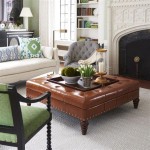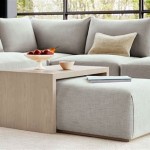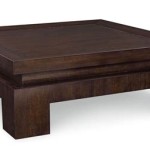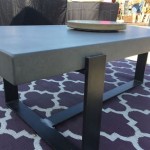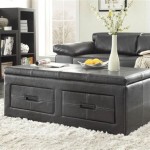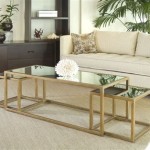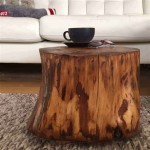Dining Room Table Centerpiece Ideas: A Modern Approach
The dining room table often serves as a focal point in the home. Beyond its functional purpose for meals, it provides an opportunity to showcase personal style and enhance the room's overall aesthetic. A well-chosen centerpiece can elevate the dining experience, adding visual interest and creating a welcoming atmosphere. In the context of modern design, centerpieces prioritize clean lines, simplicity, and the use of contemporary materials. This article explores various ideas for modern dining room table centerpieces, focusing on key principles and practical applications.
Understanding the Essence of Modern Centerpieces
Modern centerpieces diverge from traditional, ornate arrangements. Instead, they embrace minimalism, functionality, and a focus on form. The guiding principle is often "less is more," avoiding clutter and prioritizing a clean, uncluttered look. This translates to using fewer elements, selecting pieces with simple shapes, and opting for neutral or monochromatic color palettes. Materiality plays a crucial role, with a preference for materials such as metal, glass, concrete, and natural wood, often finished with smooth, matte textures.
The objective is to create a visually appealing focal point that complements the existing décor without overpowering it. The size and scale of the centerpiece should be proportionate to the size of the table and the surrounding space. Consider the shape of the table – a long, rectangular table may benefit from a linear arrangement, while a round table might work well with a more symmetrical, circular design. The height of the centerpiece is also important; it should be low enough to allow unimpeded conversation across the table.
Functionality is another essential aspect. A modern centerpiece should not only be aesthetically pleasing but also practical. It should be easy to move or remove for meal service and should not obstruct the view of guests. Consider incorporating elements that can be easily adapted for different occasions or seasons. For example, a neutral base can be styled with different accessories to reflect the changing seasons or holiday themes.
Exploring Modern Centerpiece Options: Materials and Arrangements
Several options are available when choosing materials and arrangements for a modern dining room table centerpiece. The selection will depend on individual preferences, the existing décor, and the desired level of formality.
Geometric Forms: Geometric shapes are a hallmark of modern design. Consider using sculptural objects with clean, angular lines as the centerpiece. These could be made of metal, concrete, or even ceramic. A cluster of geometric vases of varying heights, grouped together in the center of the table, can create a visually striking focal point. The vases can remain empty for a minimalist look or be filled with a few carefully chosen stems of greenery.
Natural Elements: Incorporating natural elements into a modern centerpiece adds a touch of organic warmth. This can be achieved through the use of natural wood, stones, or plants. A simple wooden tray filled with smooth river stones and a few succulents makes a calming and understated centerpiece. Alternatively, a single branch of driftwood, placed horizontally across the center of the table, can serve as a natural sculpture. When using plants, opt for varieties with clean, architectural shapes, such as succulents, air plants, or orchids. These plants require minimal maintenance and complement the modern aesthetic.
Glass and Metal Combinations: The combination of glass and metal creates a sophisticated and modern look. A glass vase with a metallic base, filled with a single type of flower or foliage, can be a simple yet elegant centerpiece. Alternatively, a metal tray filled with glass votive candle holders can create a warm and inviting atmosphere. The use of clear glass allows the light to reflect and enhance the visual appeal of the arrangement. Consider using metals with a brushed or matte finish for a more contemporary look.
Minimalist Candle Arrangements: Candles are a classic element of dining room décor, and they can be incorporated into a modern centerpiece with a minimalist approach. A grouping of simple, unadorned pillar candles of varying heights can create a warm and inviting ambiance. Choose candles in neutral colors such as white, gray, or black to complement the modern aesthetic. Place the candles on a simple tray or platform made of wood, metal, or concrete. Avoid using ornate candle holders or excessive embellishments. The focus should be on the clean lines and the warm glow of the candles.
Linear Arrangements: For long, rectangular dining tables, a linear arrangement can be particularly effective. This involves creating a centerpiece that runs lengthwise down the center of the table. This can be achieved by placing a series of similar objects in a row, such as vases, candle holders, or small sculptures. The objects should be spaced evenly and maintain a consistent visual theme. A linear arrangement can also be created using a long, narrow tray filled with a variety of elements, such as plants, stones, and candles.
Floating Elements: For a unique and modern touch, consider incorporating floating elements into the centerpiece. This can be achieved by using a shallow bowl or tray filled with water and floating flowers, candles, or other decorative objects. The water creates a reflective surface that enhances the visual appeal of the arrangement. Choose flowers with simple shapes and colors, such as orchids or lilies. Place small floating candles among the flowers to create a warm and romantic atmosphere.
Practical Considerations for Modern Centerpiece Design
Beyond the aesthetic considerations, several practical factors should be taken into account when designing a modern dining room table centerpiece.
Size and Scale: The size and scale of the centerpiece should be proportionate to the size of the table. A large centerpiece can overwhelm a small table, while a small centerpiece can get lost on a large table. Measure the table carefully and consider the dimensions of the surrounding space when choosing the size of the centerpiece. As a general rule, the centerpiece should not occupy more than one-third of the table's surface area.
Height and Visibility: The height of the centerpiece is crucial for ensuring that it does not obstruct the view of guests across the table. A tall centerpiece can make it difficult for people to see each other and can hinder conversation. The centerpiece should be low enough to allow unimpeded eye contact and communication. As a general guideline, the centerpiece should be no taller than 12 inches. If using tall elements, such as branches or flowers, ensure that they are arranged in a way that does not block the view.
Maintenance and Durability: Consider the maintenance requirements of the centerpiece when making your selection. Some materials, such as fresh flowers, require regular watering and upkeep. Other materials, such as metal and glass, may require occasional cleaning to maintain their appearance. Choose materials that are durable and easy to care for. Avoid using materials that are easily damaged or require specialized cleaning products. Also consider the longevity of the elements used. For example, faux plants or flowers can be a good alternative to fresh ones if regular maintenance is a concern.
Seasonal Adaptability: A well-designed centerpiece can be adapted to reflect the changing seasons or holiday themes. This can be achieved by swapping out certain elements, such as flowers, foliage, or decorative objects. For example, during the fall, the centerpiece can be decorated with pumpkins, gourds, and autumn leaves. During the winter, it can be decorated with pine cones, evergreen branches, and holiday ornaments. Consider choosing a neutral base for the centerpiece that can be easily styled with different accessories to reflect the changing seasons.
Safety Considerations: When using candles in a centerpiece, ensure that they are placed safely and securely. Use stable candle holders that will not tip over easily. Keep flammable materials, such as paper or fabric, away from the candles. Never leave burning candles unattended. If using electric candles, ensure that the cords are properly concealed and do not pose a tripping hazard. It’s also important to consider the placement of the centerpiece if children or pets are present, opting for arrangements that minimize the risk of accidents.
By carefully considering these factors and exploring the various options available, it is possible to create a modern dining room table centerpiece that is both aesthetically pleasing and highly functional. The key is to embrace simplicity, prioritize clean lines, and choose materials that complement the existing décor and reflect personal style.

16 Modern Dining Table Centerpieces You Can Use Year Round

Beautiful And Easy Dining Room Table Centerpiece Ideas Stonegable

Beautiful And Easy Dining Room Table Centerpiece Ideas Stonegable

80 Best Dining Room Ideas And Decorating Tips

Kitchen Table Centerpiece Design Ideas Pictures

Farmhouse Style Dining Room Table And Decor Ideas 6 Homedecoraccessorie Rooms
:strip_icc()/dining-room-table-decor-ideas-1-ashley-montgomery-design-the-nesbit-ef78d3dec9564a2eace6010270f75fa3.png?strip=all)
33 Standout Dining Table Décor Ideas
:max_bytes(150000):strip_icc()/de0a09_50941abc08ba4185be9559b9bc6c239emv2-e536d6c41f24432783f793bbdd421996.jpeg?strip=all)
43 Dining Table Centerpiece Ideas For Any Time Of Year

80 Best Dining Room Ideas And Decorating Tips
:max_bytes(150000):strip_icc()/8vjhlYyQ-fa78b5c1432341bba99390673e31d25c.jpeg?strip=all)
Dining Table Decor Ideas That Aren T Just For Occasions
Related Posts

